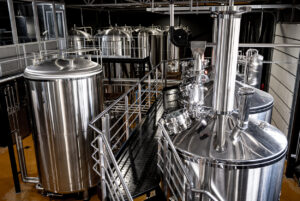The Protecting Americans from Tax Hikes (PATH) Act of 2015 includes provisions that allow certain taxpayers to offset their AMT liability with the R&D tax credit for taxable years beginning on or after Jan 1, 2016.
AMT Limitations
Before the PATH Act, AMT restrictions prevented qualified companies from utilizing 100% of the R&D tax credit. The excess credits were often carried forward. Today, small businesses can offset AMT using the R&D tax credit for tax years beginning after December 31, 2015.
Yet, some limitations, like the 25/25 rule, remain.
This regulation restricts taxpayers with over $25,000 in regular tax liability from offsetting more than 75% of their tax liability using the credit (Sec. 38(c)(1)). Carryforwards before 2016 are also still limited by AMT.
Eligible Business Types
Non-publicly traded corporations, partnerships, and sole proprietorships in any industry may qualify for the R&D Tax Credit. The most common industries engaged in qualified R&D activities include:
- Technology and Software
- Manufacturing
- Engineering
- Life Sciences
Qualified Research Activities and Expenses
Qualified research, as defined by the IRS, is based on the following four-part test:
The activities that qualify for the R&D tax credit are the same ones driving growth in your business.
- Creating improved products, processes, formulas, software, and techniques
- Automating or improving internal manufacturing processes
- Designing tools, jigs, fixtures, and molds
- Integrating new equipment
- Development of data center, big data, and data mining tools
- Integration of APIs and other technologies
- Development of financial or pricing models
- Hiring outside consultants to perform any of the listed activities
- Manufacturing new or improved products
- Developing prototypes, first articles, models
- Evaluation of alternative materials
- Development of firmware
- Network hardware and software development and optimization
- Developing simulators
- Development of risk management systems
Ensuring that you understand the qualification rules is an essential first step in claiming the R&D tax credit. This is normally done during a feasibility analysis, also referred to as Phase 1. R&D activities are explored and identified at a high level along with related qualified research expenses (QREs). This information is then used to estimate your federal and state R&D tax credits. Education is key and provides the ability to identify qualified activities and QREs so a more accurate benefit estimate can be determined.
The expenses that qualify for research activities within your company typically include employee compensation, materials, and contracted services. Various forms of documentation are sufficient to support your qualified expenses and may include payroll records, financial records showing supply or contract research expenses, and vendor invoices.
Are Small Businesses Eligible for Offsetting the AMT with the R&D Tax Credit?
A small business may be eligible to offset the AMT with the R&D tax credit if it:
- Is a non-publicly traded corporation, partnership, or sole proprietorship with an average of $50 million or less in gross receipts over the prior three years
- Has conducted qualified research defined under IRC Sec. 41
On average, companies are typically able to claim 7-10% of their qualified expenses as a federal R&D tax credit. For example, a single software developer, engineer, or lab technician who receives a W2 of $100,000 a year may generate a tax savings of up to $10,000.





